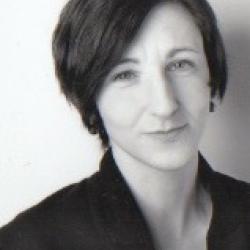Between Art, Research, and Occupation Policy
Between Art, Research, and Occupation Policy
The research project is concerned with the Kunsthistorische Forschungsstätte in Paris, the first German foreign institute for art history in France. Founded in early 1942, the research institute existed until the end of the German occupation in the building that formerly housed the Czech embassy, at 18, rue Bonaparte in the sixth arrondissement.
In addition to examining the context of its founding and the institutional circumstances, particular attention will be paid to the academic networks and scholarly activities of German art historians in France. Furthermore, its establishment during the German occupation of France prompts an examination of the synergies between research and cultural propaganda, between the protection of cultural goods and art theft, and between occupation and collaboration. From this, the following thematic focal points will be developed: the analysis of the links between institutions, actors, scholarly praxis as well as the subjects and methods of their research in an attempt to determine the effect of the occupation of France on scholarly self-image, analytical methods, and forms of appropriation of subjects of research. For this, the First World War as well as the German occupation of France from 1940 to 1944 were determined to be the central time periods.
Beginning in 1940, the documentation of art and monuments conducted by Foto Marburg can be seen as a special form of mobilizing works, which has made other categorical, spatial, and institutional connections possible. The interaction of photographic mobilization, research, and art theft, in particular, is specific to German-occupied France and can be seen in the actions of Hermann Bunjes (1911–1945), the director of the Kunsthistorische Forschungsstätte.
Along with the professional German art theft networks in France—spanning the art market, museums, monument preservation, and organizations of the NSDAP—academic communities will be reconstructed in order to explore the relationships between scholarly policies and accompanying knowledge systems in the context of dictatorship, war, and occupation.
As organizers of German art history in occupied France, one can name the professors Alfred Stange in Bonn (1894–1968) and Richard Hamann in Marburg (1879–1961). The systematic analysis of artworks and monuments in France through Foto Marburg had lasting effects on research topics in art history. For this reason, the evolution and concepts of German and French Gothic studies since the First World War will be traced and comparatively analyzed with regard to methodological models. Based on the work of Wilhelm Pinder, Alfred Stange, and Richard Hamann, various approaches can be identified which involve models of stylistic history based on evolutionary argumentation, proto-social-science oriented approaches in ethnic and culture space research, and geographic concepts of art.
The examination is based on a cross-disciplinary approach that brings together contemporary-historical methods of structural and network analysis with questions pertaining to the history of the discipline of art history. The goal is to arrive at a dual perspective that links German research on France with the development of French art history within a relational history. Source materials from German and French archives, unknown until today, have been collected and enable the recreation of the activities of German art historians in occupied France and the analysis of synergies between research and cultural propaganda, the preservation of cultural goods and art theft, occupation and collaboration.
Through scholarly exchange between German and French institutions and researchers, a scholarly monograph on French studies during the German occupation will illuminate key aspects of the history of art history and identify sources relevant to the research. In view of the current debate surrounding art theft and restitution, the project aims at emphasizing the importance of research into context from the perspective of scholarly history and contributing to a transnational scholarly dialog.
Images: camera in the choir of Saint Cybard in Plassac-Rouffiac; left, Hans-Adalbert von Stockhausen, picture taken as part of the photo champagne in occupied France; photograph: Hartwig Beseler, taken at Plassac-Rouffiac, 1941; Fotografie Marburg, image archive Foto Marburg; context of the collection: estate of Hans-Adalbert von Stockhausen
_______________________
Leadership






